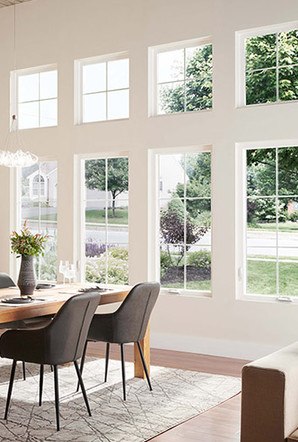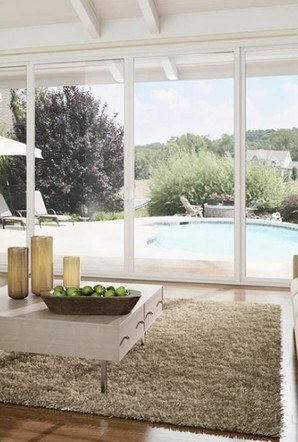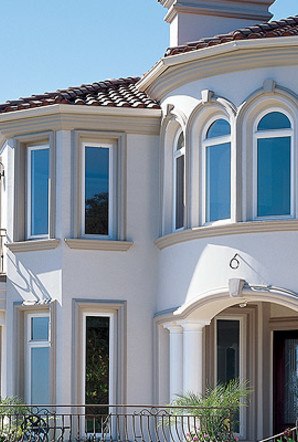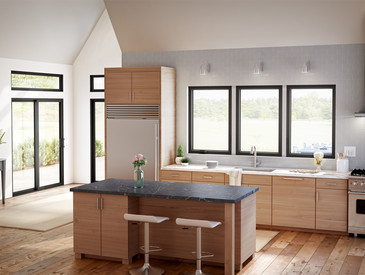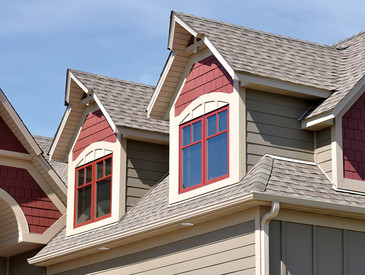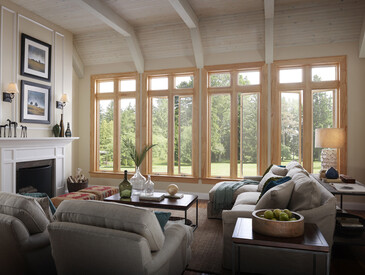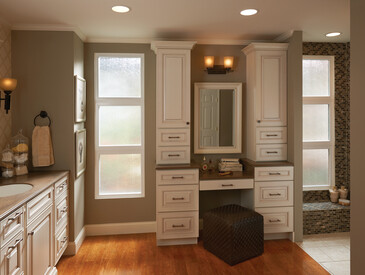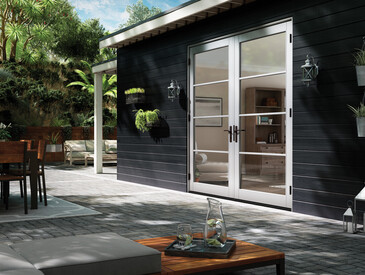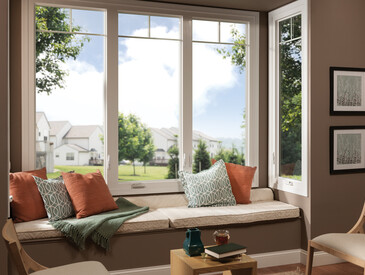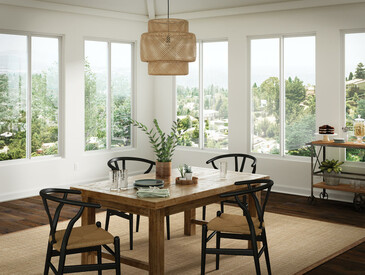Glass, hardware and grids, oh my! What’s a homeowner to do when it comes to learning about window parts? We’ve got you covered with these easy to understand explanations outlining the parts of a window.
Why Is It Important to Know the Parts of a Window?
Understanding the parts of a window is important for proper installation and maintenance. When you’re familiar with the correct terminology, it’s easier to talk to window installation companies and contractors about what you want and how to plan your project.
When you’re installing windows, you’ll definitely need to know about window anatomy so you can help prevent issues like water leakage and poor insulation. Knowing the terminology can also help you understand energy-efficient features, ensure home security, and clean, maintain, and repair your windows.
Standard Window Parts
While various window operating styles might have slightly different features, the standard parts of a window remain the same for any project. We’ll go over these three basic parts first, then dive into each one in more detail later in the article.
Window Frame
The window frame is the overall structure that surrounds and supports the window. The frame is securely attached to the wall of the building and includes the head at the top, the sill at the bottom, and the jambs on the sides. It also helps to seal the window against the elements.
Window Sash
The window sash is the part of the window that holds the glass panes in place. It’s made up of horizontal and vertical frame pieces called rails and stiles. The sash can either be fixed, staying in one place, or operable, allowing it to move for ventilation. Examples of operable sashes include those that slide up and down or tilt inward.
Window Glass
The window glass, also known as the window pane or glazing, is the transparent part of the window that allows light to enter a room. Window glass can come in various forms, such as single-, double-, or triple-pane and often features special coatings or treatments on the glass to enhance thermal performance, reduce UV light penetration, and improve overall energy efficiency.

Parts of a Window Frame
The frame is probably the first part of a window that comes to mind. Window frames can be broken down into the following parts.
Head
The head is the top horizontal part of the window frame. It provides structural support to the top of the window and helps bear the weight of the wall above. The head is an essential part of the window for maintaining overall balance and alignment.
Sill
The sill is the bottom horizontal part of a window frame. It’s often sloped to help water drain away from the window instead of seeping into the home. The sill also helps support the weight of the window and provides a finished appearance at the bottom edge.
Jamb
Jambs are the vertical sides of the window frame. They run from the head to the sill and help hold the window sash in place. Jambs also contain tracks or channels that guide the movement of operable sashes and weatherstripping to improve insulation.
Casing
The casing is the trim that surrounds the entire window frame on both the interior and exterior. It covers the gap between the window frame and the wall, giving all the parts of a window a more finished appearance. Exterior casing also helps protect against water and air infiltration, while interior casing can enhance the look of a room.
Apron
The apron is a decorative trim piece located beneath the window sill on the interior side. It covers the gap between the bottom of the window and the wall, providing a finished look and contributing to the aesthetic appeal of the window.
Weep Holes
Weep holes are small openings located at the bottom of the window frame, usually in the sill or the lower part of the jamb. They allow water that accumulates within the window frame to drain out, preventing water damage and mold growth and maintaining the longevity and functionality of the window.
Frame Material
The frame is one of the most important parts of a window, and you’ll want to choose the right material. Depending on the look and feel you’re trying to achieve, each material offers different benefits.
- Vinyl: Vinyl windows are low-maintenance, durable, non-corroding, and come in a variety of exterior colors to blend in or stand out.
- Aluminum: Light yet strong, aluminum windows offer slim profiles to maximize the amount of glass shown.
- Fiberglass: Fiberglass windows are very strong and resist warping and rotting. This material is often used in hot, humid rooms, such as bathrooms and kitchens, or for large glass walls.
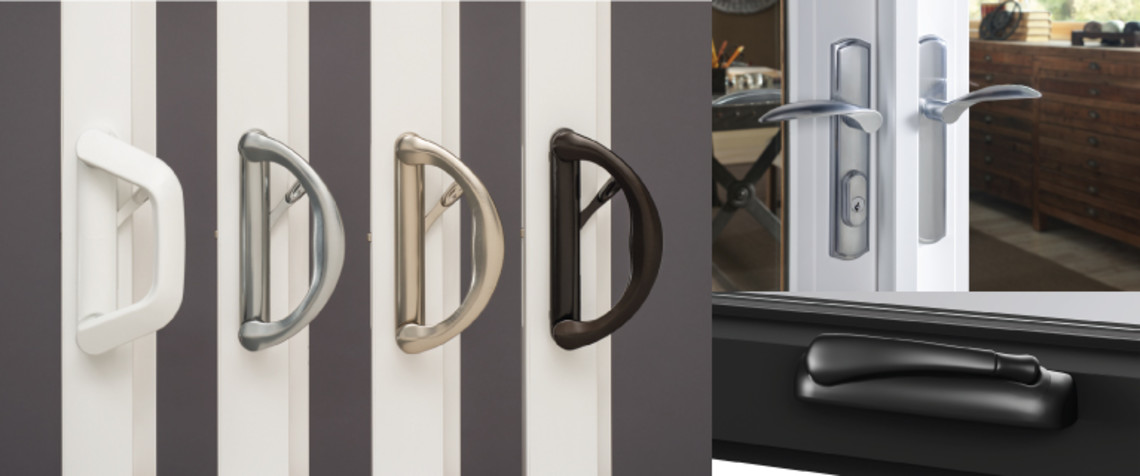
Parts of a Window Sash
The window sash is just as important as the frame when it comes to window installation, maintenance, and repair. Here are the parts of a window sash you should know.
Window Rail
The top and the bottom parts of the sash are called the window rails. There are typically two: the top rail and the bottom rail. Some styles have more – for example, double hung windows have two rails on the top sash and two on the bottom. The middle rail of the double hung window is called the checkrail.
Stiles
The vertical parts of the window sash are called the stiles. There are usually two stiles: one on the left and one on the right. Stiles fit within the window jambs and connect with the rails to form the perimeter of the sash, creating a strong frame that holds the glass panes.
Handle and Lock
The sash lock and lift mechanisms are the most important parts of a window when it comes to functionality. The sash lock is typically located on the bottom rail, for example in single hung windows. However in sliding windows or casement windows, it may be on the side. Lift mechanisms, such as lock handles or hand cranks, are on the bottom rail for most styles.
Window Pane
The glazing or window pane is the transparent part of the sash that allows light to enter. Modern sashes may incorporate single, double, or triple panes of glass for enhanced insulation and energy efficiency. The glass is usually fitted into the sash with glazing putty or glazing beads, ensuring a secure and airtight fit.
Window Grid
Window grids are optional parts of a window that visually break up the pane of glass with a variety of decorative styles. Grids can be placed either between the panes of glass or on the surface of the glass. You may find that exterior grids look more authentic but having them between the glass is easier to clean.

Anatomy of Window Glass
The glass or glazing is part of the window sash, but it also has its own properties and features you should know about, especially when it comes to understanding energy efficiency.
Multiple Panes
The glass itself is one of the parts of a window that has changed the most in modern products. Most windows today are at least double-pane, which means they consist of two glass panes separated by a spacer. Triple-pane windows take this a step further by adding another pane, so there are two insulating spaces. These multiple layers reduce heat transfer and are more energy-efficient than single-pane windows.
Spacers
Spacers maintain a uniform distance between the panes of glass. This part of a window is typically made from materials like aluminum, stainless steel, or more advanced options like warm-edge spacers. Spacers enhance the insulating properties of the window by ensuring the panes stay properly aligned and sealed.
Fillers
To increase insulation and energy efficiency even more, the spaces between panes are often filled with nonreactive gasses that are more resistant to heat compared to regular air. Argon is commonly used due to its excellent balance of cost and insulation properties, while krypton offers even better insulation but at a higher cost.
Low-E Glass
Low-E glass, which stands for low-emissivity, is another key feature of the modern parts of a window. It involves a thin, invisible coating applied to the glass surface, which reflects infrared heat while allowing visible light to pass through. Low-E glass significantly enhances the energy efficiency of windows without compromising on natural light.
Aesthetic Options
Choosing the right glass isn’t all about energy efficiency. You also have other options for privacy and light filtration.
- Laminated glass: Laminated glass is produced by permanently bonding two pieces of glass together with a tough plastic interlayer between them. It reduces noise and UV rays, and is often used as impact glass as well.
- Tinted glass: This option offers additional shading from direct sunlight.
- Obscure glass: Often used for bathrooms, these textural patterns offer privacy while allowing light to show through.
- Crystal groove: An artistic and elegant option where the design is ground into the glass. MILGARD offers a square, diamond, fan, or spoke pattern.
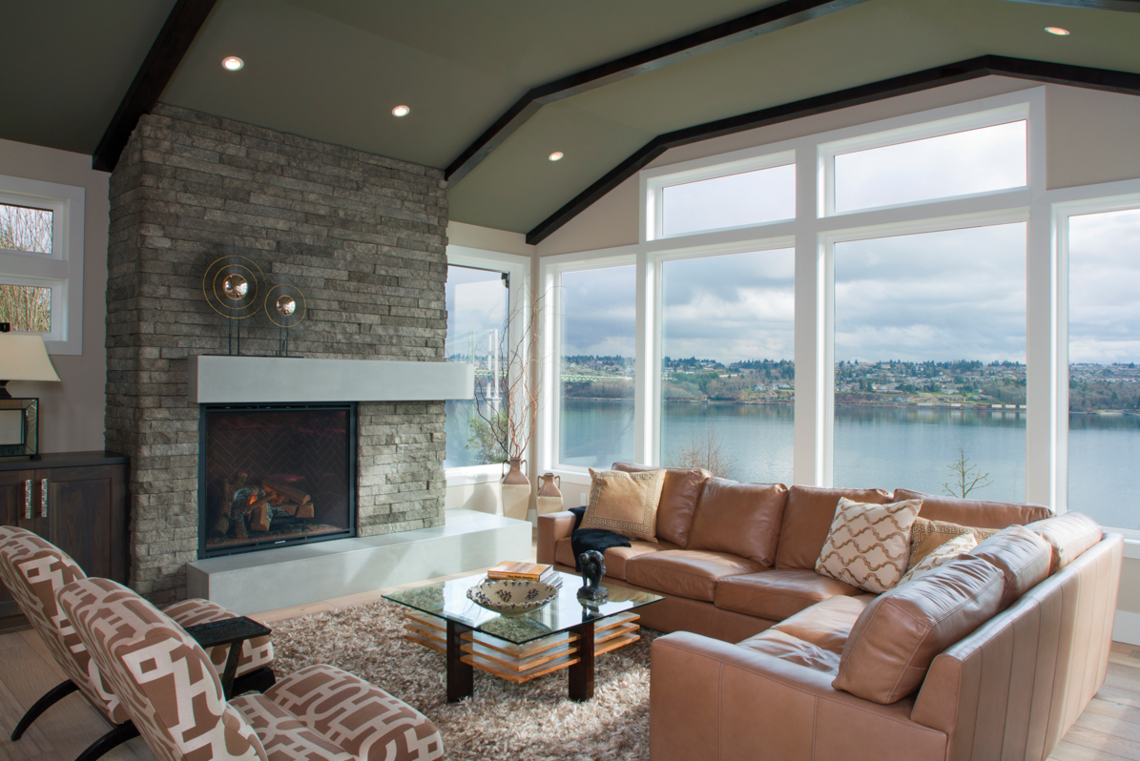
Upgrade Your Windows With Modern Features
Now that you better understand the parts of a window, you’ll feel more confident as you start planning your project and shopping for your perfect window. If you have more questions – or want to get started with a quote – MILGARD has hundreds of window dealer experts ready to help. Use our dealer locator to find one near you.













